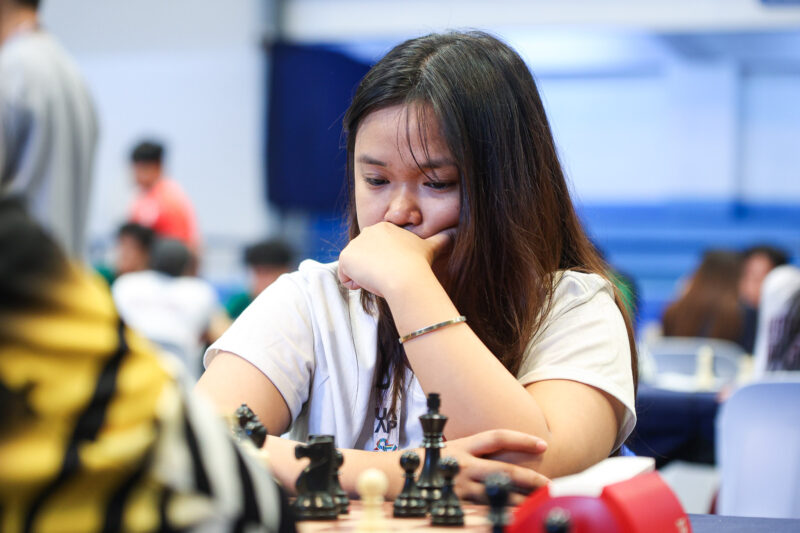ATENEANS CAN expect a modified pick-up/drop-off system and improved walkways, as the Ateneo Traffic Group (ATG) starts rolling out its plans to ease traffic problems this June.
“We’d like to see better management of our drop-off and pick-up points,” said ATG member and Environmental Science Department faculty member Abigail Favis. “If we are able to correct that, we should be able to address [the queuing problem], given that our loading and unloading bays are sufficient to accommodate everyone.”
Walkways will be built in a way that pedestrians are amply protected from the weather, according to Favis. The top priority is improving the connection of walkways from the high school to the college area.
After about four months of extensive research, the ATG has now finalized its preliminary report and is currently in the process of having it approved by University President Jose Ramon Villarin, SJ.
The report will contain the ATG’s initial findings on the vehicular traffic concerns plaguing the campus and Katipunan Avenue. It will also include the ATG’s proposed solutions, broken down into “Infrastructure Interventions” and “Behavioral Adjustment” recommendations.
Aside from Favis, coordinator of the Ateneo Environmental Management Council, the ATG is also composed of former Vice President for Administration and Planning Edna P. Franco; Facilities Management Director Jose Arnulfo Batac; Institute of Philippine Culture Director Czarina Saloma-Akpedonu; and Information Systems and Computer Science Department Associate Professor Kardi Teknomo.
Villarin formed the group last January in anticipation of escalated traffic problems as Katipunan Avenue becomes a conduit for the North and South Luzon Expressways.
Better loading–unloading bays, walkways
“In terms of capacity of the road itself, the current volume of vehicles [along] Katipunan Avenue is already beyond it at [around] 30%, particularly for the northbound lanes,” said Batac.
However, he said that the road network inside the Ateneo can accommodate the volume of vehicles going inside the campus. “The main concern that we have is the manner by which [drivers] are dropping off or picking up the students.”
Traffic from the Loyola Schools contributes to the long queues of cars in the morning, although it may not be as noticeable since the volume of vehicles is spread out, he said.
Meanwhile, Franco said, “In my own observation, we’re really not traffic-conscious. Even if you say ‘no stopping,’ they’ll stop, and nobody cares that there are already three vehicles waiting at the back just because you dropped off somebody.”
“It’s really being more conscious of what traffic you can cause, simply by doing something or not doing something,” she added.
To solve the problem of long queues of vehicles in the grade school area, the ATG is proposing to segregate the volume of vehicles by having dedicated drop-off points for each year level.
Two kinds of stickers are now available for grade school vehicles: one allowing cars to drop off students in the inner driveway and the other permitting student drop-off only at the outer driveway.
The ATG is also keen on making sidewalks on campus more pedestrian-friendly. “If we want less dependence on vehicles and more people to walk, then we have to make it easy for the walkers to do that,” said Favis. As mentioned earlier, the walkways will be constructed to provide convenience for pedestrians.
The ATG would also improve on the system of carpooling and will work towards a stricter implementation of car stickers on campus.
Community meeting
As part of its social assessment efforts, the ATG conducted a community meeting on traffic last March 9, where they met representatives from the different units and sectors of the Ateneo. Several students from the grade school and high school were also part of the meeting.
“What was good in that community meeting was that there was an honest assessment of everybody that we all contribute to the traffic,” Franco said.
“One of the things that we got [the attendees] to commit to was to reduce the number of cars on campus,” she added.
She also said that the ATG received several suggestions from the participants, including a bid on having a “Carless Day” on campus, which the group is willing to further explore in the future.
The group is also looking into the possibility of making the campus more bike-friendly, but it is not a priority at the moment, said Franco. “There are more important things we need to do first before we can concentrate on that, but it is a good idea.”
Meeting with external partners
Aside from the community meeting, the ATG has conducted consultations with external partners, including the barangay office and the Metropolitan Manila Development Authority (MMDA).
Batac said that MMDA Chairman Francis Tolentino had brought up the possibility of opening the campus roads to the public.
However, it is not something that the ATG can easily explore, Batac said. “We can’t easily implement this because of security concerns. We have been trying to sift the vehicles trying to enter the campus. If we do that, we are practically opening the campus to anyone.”
In spite of Batac’s concern, he admitted that the Ateneo has somehow been a conduit for some employees and students of Miriam College (MC), and vice versa. He said that people bound for the Ateneo would enter MC and pass through the Friendship Bridge, while those bound for MC would ride a tricycle to the high school carpark and walk to the campus of the said college.
As of press time, the ATG has yet to interview Quezon City Vice Mayor Joy Belmonte and the deployed MMDA personnel along Katipunan Avenue. The group is also hoping to work with other government agencies in solving the traffic problem.
Becoming the solution
The ATG has other plans up its sleeves. “We’re exploring some traffic flow routing,” Franco said. “That might need a little bit more consultation ‘cause it might mean doing more than one way to improve the circulation of traffic.”
The ATG will also be studying the possibility of using campus shuttles and having pay parking. It will also explore more on access roads, including possible connections from Aurora Boulevard to Ateneo and even from Mangyan Road to the high school.
Franco, Favis and Batac share the same sentiments about community-wide support as key to the success of easing the traffic problems. Favis said that they are hoping that the Ateneo community will give its support to the ATG’s plans.
“What we’re doing is for the greater good, and we would like to acknowledge our individual responsibility and our individual contributions to the traffic problem,” Favis said. “Everyone has to pitch in to help.”
Franco added that solving the traffic problem requires a team effort. “We can only solve these problems long-term if we look at the different parts of the system: the members of the Ateneo community and the community outside.”
Furthermore, Batac said that “it is not really what you expect from the ATG, but what you [as an individual] can contribute to the community. Instead of pointing [at] others to give out the solution, be part of the solution and contribute.”







